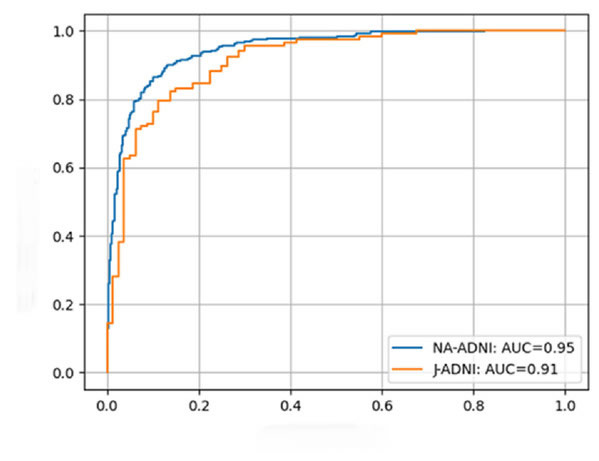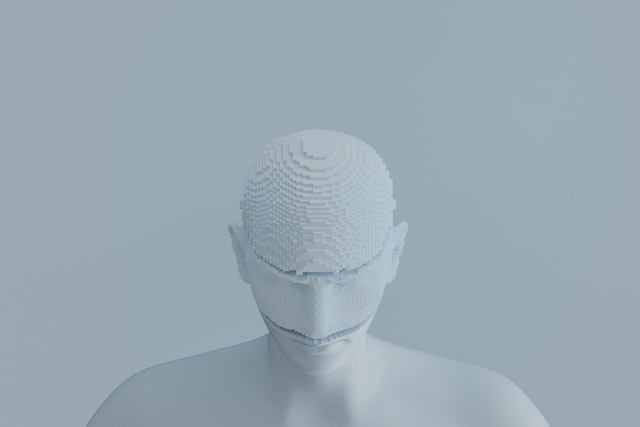(hereinafter referred to as "Fujifilm") and the National Center for Psychiatric and Neurological Research (NCMR) announced positive research results on the use of Fujifilm's new AI technology to predict whether patients with mild cognitive impairment (MCI) will progress to Alzheimer's disease (AD) within two years. The AI technology for AD progression prediction has achieved an accuracy of 88% and the results have been published in npj Digital Medicine, a subjournal of the international academic journal Nature.

The technology was developed by Fujifilm based on its advanced image recognition technology and expertise in machine learning.
In the future, Fujifilm and the National Center for Psychiatric and Neurological Research will further validate the technology with a view to better applying it in clinical trials for the treatment of AD disorders and the stratification of patients.
Key research findings
Using Fujifilm's advanced image recognition technology accumulated in the fields of photography and medicine, Fujifilm has established a technology for high-precision prediction by AI (AD progression prediction AI technology), which can predict the progression from MCI to AD with high accuracy despite the limited research data available. The AI technology for AD progression prediction is a prediction technology based on a variety of clinical information, including MRI images and cognitive ability scores.

A research group from Fujifilm and the National Center for Psychiatric and Neurological Research [4] applied the AD progression prediction AI technique to a database of patients of different ethnic groups (North Americans and Japanese) to predict whether MCI patients would progress to AD within 2 years, and the results showed an accuracy of 84-88%. The results showed that the AD progression prediction AI technique is highly scalable.
Background and history of the study
It is estimated that there are currently about 55 million people with cognitive impairment worldwide. And with an ageing population, this number is expected to increase to approximately 139 million by 2050. Among cognitive disorders, the largest number of people have AD (a form of cognitive impairment) and this trend is expected to continue in the future.
In recent years, there has been a preference in the development of new drugs for AD to implement clinical trials with early stage MCI patients to observe the presence of beta-amyloid, which is the main causative substance in AD and begins to accumulate before the onset of the disease. However, most clinical trials have been unsuccessful, one reason being that less than 20% of patients progress from MCI to AD within two years [5], many MCI patients were not found to have progressed during the clinical trials, and those assigned to the control group (taking placebo, etc.) were considered to have their disease under control because they did not progress to AD. Therefore, no statistically credible conclusions could be drawn. In this case, Fujifilm and the National Center for Psychiatric and Neurological Research in Japan believe that using AI to predict which patients will progress from MCI to AD and conducting clinical trials on only these patients will enable the effectiveness of new drugs to be properly assessed and allow for successful treatment and validation.
Research
In recent years, a large number of studies have reported that image recognition accuracy can be significantly improved by introducing deep learning, but a large amount of learning data is required to support the effectiveness of deep learning. However, the public database of the world's largest AD research project, NA-ADNI [6], currently contains data on only about 1,000 MCI patients. Typically, in the field of object recognition research, over 10 million images are required to form deep learning. In this case, it is certainly a huge challenge to establish highly accurate AI prediction techniques with limited data. To solve this problem, Fujifilm decided to establish an AD progression prediction AI technology that uses deep learning to predict AD progression by targeting specific areas of the brain that are highly correlated with AD progression.
Technology established
Using its advanced image recognition technology accumulated in the fields of photography and medicine, Fujifilm identified regions centred on (1) the hippocampus and (2) the anterior temporal lobe, respectively, from 3D MRI images of the brain, as, these two regions are considered to be most relevant to AD progression.
Using deep learning, detailed atrophy patterns associated with AD progression were extracted from the two regions centred on (1) hippocampus and (2) anterior temporal lobe, and their image features were calculated [7].The AI then focused on the atrophy patterns in the hippocampal and amygdala regions identified by the two regions that play an important role in the diagnosis of the readings, and identified their progression towards AD based on their patterns.
Learning was performed using data from MCI patients from the NA-ADNI public database. In addition to image features of specific regions of the brain that are thought to be highly correlated with AD progression, techniques for high-precision AD progression prediction through a variety of clinical information such as cognitive ability test scores were established.
Detailed atrophy patterns of interest for AI in predicting AD progression (3D MRI examination images)

A whole-brain learning AI will not only focus on the hippocampus and amygdala regions, which are highly correlated with AD progression, but also on the cerebrospinal fluid and occipital lobe, which are not closely related.
On the other hand, AI that learns in regions centred on the hippocampus or anterior temporal lobe pays more attention to detailed atrophy patterns in the hippocampal or amygdala regions and is more efficient than whole-brain learning AI in identifying whether they will progress to AD.
By excluding learning from regions of low relevance, deep learning with limited data is less influenced by individual differences, allowing for higher predictive accuracy.
Technology validation
A research team from Fujifilm and the National Center for Psychiatric and Neurological Research in Japan used the AD progression prediction AI technique to predict whether patients would progress from MCI to AD within 2 years, and applied the AD progression prediction AI technique to the NA-ADNI database in addition to the unlearned J-ADNI[8] database to objectively assess the prediction accuracy of the technique.
In predicting whether a patient with MCI would develop into a patient with AD, the prediction accuracy was 88% for NA-ADNI and 84% for J-ADNI.
Also, the AUC [9], an indicator of AI accuracy that is equally important as accuracy, was 0.95 for NA-ADNI and 0.91 for J-ADNI (Figure 2).
represents the ROC curves of the NA-ADNI and J-ADNI assessment results [10]

The AUC (area under the ROC curve) metric derived from the ROC curve was 0.95 for NA-ADNI and 0.91 for J-ADNI. the maximum value of the AUC was 1, indicating that AD progression was predicted with high accuracy in both NA-ADNI and J-ADNI.
In summary, the AI technique for AD progression prediction can predict the progression from MCI to AD with high accuracy in different human populations, and is an AI technique with high generalizability.
Future prospects
Fujifilm and the National Center for Psychiatric and Neurological Research will analyse patients stratified by the prediction results of the AD progression prediction AI technology in clinical trial data to further validate the effectiveness of this technology. Specifically, the AD progression prediction AI technique will be used to predict the rate of progression of patients with cognitive impairment, and the possibility of improving the success rate of clinical trials will be investigated by (1) not conducting clinical trials on patients without AD progression, and (2) narrowing the difference in the distribution of progression rates between the control and treatment groups. The aim is to use AD progression prediction AI techniques in new clinical trials of AD therapeutics.

The extension of the algorithm for AD progression prediction AI technology to brain images and clinical data for various psychiatric and neurological disorders will also be explored for application. This relates to patient prognosis and prediction of response to treatment, and we hope to play an important role in promoting personalised medicine.
This research was carried out under the auspices of the Joint Research Promotion Project for Industry-Academia Co-creation Platforms (JST, OPERA, JPMJOP1842) of the Japan National Agency for the Promotion of Science and Technology.
